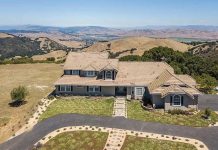Liability regarding common facilities in a subdivision
By Patrick Casey
Lombardo
&
amp; Gilles
In the past 30 years, large scale subdivisions have become
increasingly more popular not only in California but throughout the
United States.
Liability regarding common facilities in a subdivision
By Patrick Casey
Lombardo & Gilles
In the past 30 years, large scale subdivisions have become increasingly more popular not only in California but throughout the United States.
These subdivisions have a homeowners association (“HOA”) that enforces the Covenants, Conditions and Restrictions (“CCRs”), which are the governing documents for the subdivision. The CCRs address a wide array of topics, including establishing an architectural review committee, giving the HOA the ability to assess homeowners for regular and special assessments, defining the common areas, assigning parking spaces and establishing maintenance obligations by the HOA for certain items and by the individual homeowners for other items.
A recent California case addressed the issue of the maintenance obligations of the HOA as compared to the maintenance obligations of the individual homeowners. This case involved a subdivision in Riverside County.
The subdivision map specifically identified and established a landscape easement over certain portions of the property that were only to be used for landscaping purposes. The subdivision map also established a drainage ditch around and through various portions of the subdivision. The drainage ditch was not located on every lot in the subdivision but rather only on various lots as required in order to provide adequate drainage from rain and storm water runoff.
The CCRs stated that the HOA was responsible to pay for and maintain the landscape easement, but that each individual lot owner was responsible to pay for maintaining the drainage ditch if the drainage ditch was on their parcel of property. The effect of these provisions was the HOA would build in the cost of maintaining the landscape easement into the regular assessments that were billed to the homeowners.
Thus, every homeowner contributed to the costs of maintaining the landscape easement. However, only those owners that had the drainage ditch on their property had to pay for maintaining the drainage ditch. In other words, a homeowner that did not have any part of the drainage ditch on his or her property did not have to contribute anything to maintaining the drainage ditch.
The conflict in this case arose because the drainage ditch on this one particular lot happened to be located in the same place as the landscape easement. The owner of this lot did not spend any money on maintaining the drainage ditch because she believed that it was the HOA’s duty to maintain the drainage ditch since it was located in the landscape easement area.
The parties agreed that the owner had no obligation to maintain the landscape easement, but the HOA insisted that the owner maintain the drainage ditch. The owner refused, the drainage ditch fell into serious disrepair, and the HOA sued the homeowner to force her to maintain the drainage ditch.
The homeowner won at the trial court level but lost in the appellate court. The appellate court ruled for the HOA and said that the more specific portions of the CCRS (regarding an owner’s obligation to maintain all drainage facilities on their lot) govern when there is a conflict with more general portions of the CCRS (e.g. the HOA’s obligation to maintain the landscape easement area).
Also, the course of conduct between the parties was also determinative, in that the HOA had never maintained any drainage facilities nor had it billed any owners to do so on their behalf. Finally, the appellate court determined that maintaining drainage facilities was more important than maintaining landscaping, and that the obligation to maintain the drainage facilities would supersede any obligation by the HOA to maintain the landscaping.
This case is important because it puts residents of a subdivision on notice that the reading the CCRs alone may not be enough in order for the residents to determine for what they will be obligated to pay. If a resident is unsure about whether he or she will have a specific payment obligation, the resident should attend the homeowner’s meeting and raise the issue with all the homeowners.
Alternatively, the resident could contact the property manager for the subdivision (if there is a property manager) and ask the property manager to explain a resident’s specific payment obligations. A final option is for the resident to retain an attorney to review the CCRs and explain the resident’s payment obligations. In any event, it is important that every resident clearly understand those costs and expenses for which he or she will be obligated to pay.
This column is the work product of Lombardo & Gilles, LLP, which has offices in Hollister and Salinas. Patrick Casey is an attorney with Lombardo & Gilles, LLP. You may contact the author at 888-757-2444 or pa*****@****il.com. Mail your questions to Patrick Casey, It’s the Law, c/o The Pinnacle, 350 San Sixth St., Ste. 102 Hollister, CA 95023.









